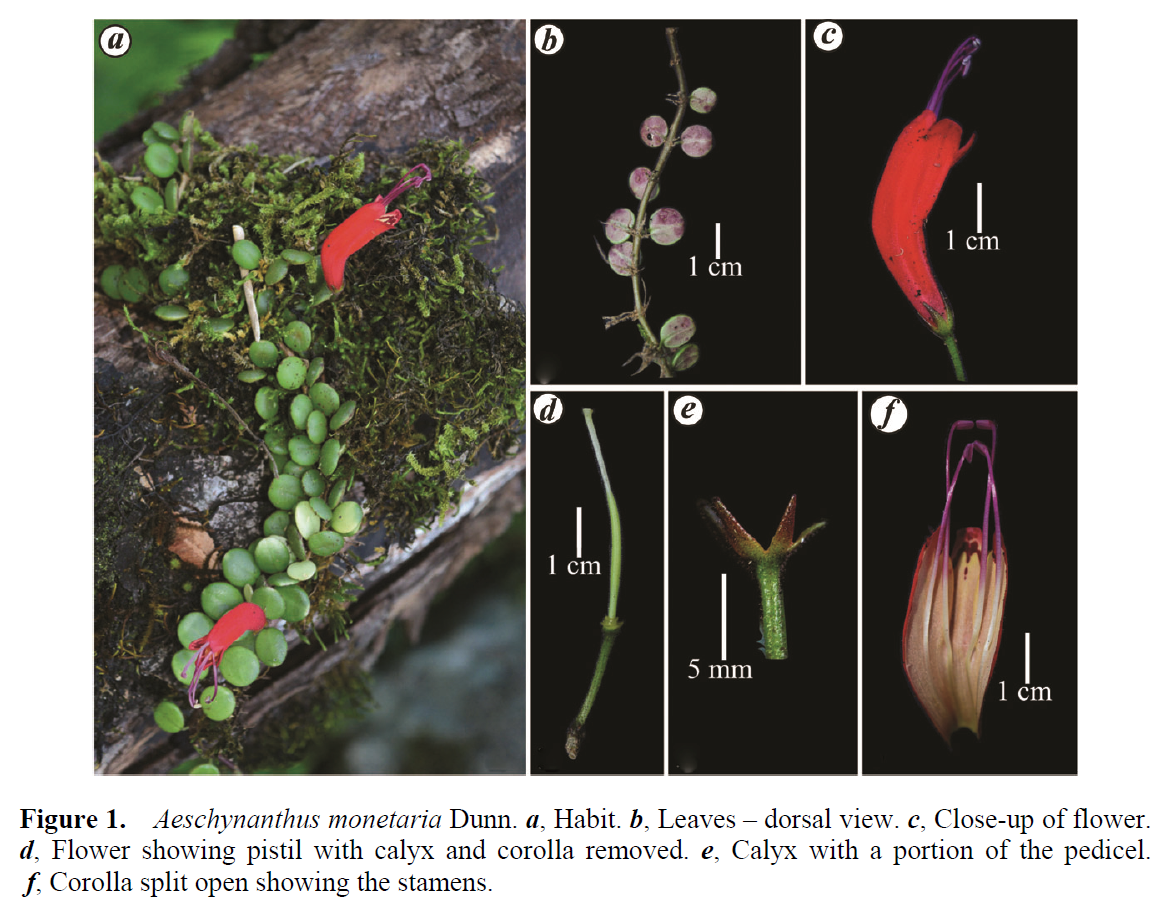The IUCN – International Union for Conservation of Nature – is the global body that monitors all the species of plants and animals in the world. It announces when a species is at risk, endangered, or extinct.
It also issues guidelines for these definitions. This ensures that different countries or people do not use these terms in their own way. Endangered should mean the same thing all over the world.
Aeschynanthus monetaria Dunn is a plant which has a bright red tubular petals. This makes the flower look like a lipstick. Therefore, the plant is colloquially (informally) called the lipstick plant.
It was first recorded by British botanist Stephen Troyte Dunn in 1912. The samples for that observation had been collected by Mr. Isaac Henry Burkill, another botanist.
After almost a century, the plant has been sighted again in the Anjaw district of Arunachal Pradesh. A paper on this discovery has been published in the journal – Current Science.
The generic name Aeschynanthus is
– The paper published in Current Science
derived either from the Greek aischyne or
aischynō meaning shame or to be ashamed
respectively, and anthos meaning flower,
alluding to the usually red-coloured corolla,
or (less probably) from aischýnein meaning
deform, distort and anthos meaning
flower, referring to the strange (?) form of
the corolla
While this plant has been reported from China in 2020, it was not observed again in India after that first sighting. The only other known specimen of this plant in India is at the Central National Herbarium, Howrah. This plant has not been found in any other part of the world so far.
According to the paper, the plant flowers and produces fruit from October–January.
It grows in moist and evergreen forests, at elevations ranging from 543 to 1134 m (1780 – 3700 feet).
About 40-50 plants of this species were observed by the researchers, which is a huge find.
The paper has been co-authored by Krishna Chowlu (Arunachal Pradesh), Gopal Krishna (Kolkata), and W Arisdason (Coimbatore). They are all scientists with the Botanical Survey of India.

